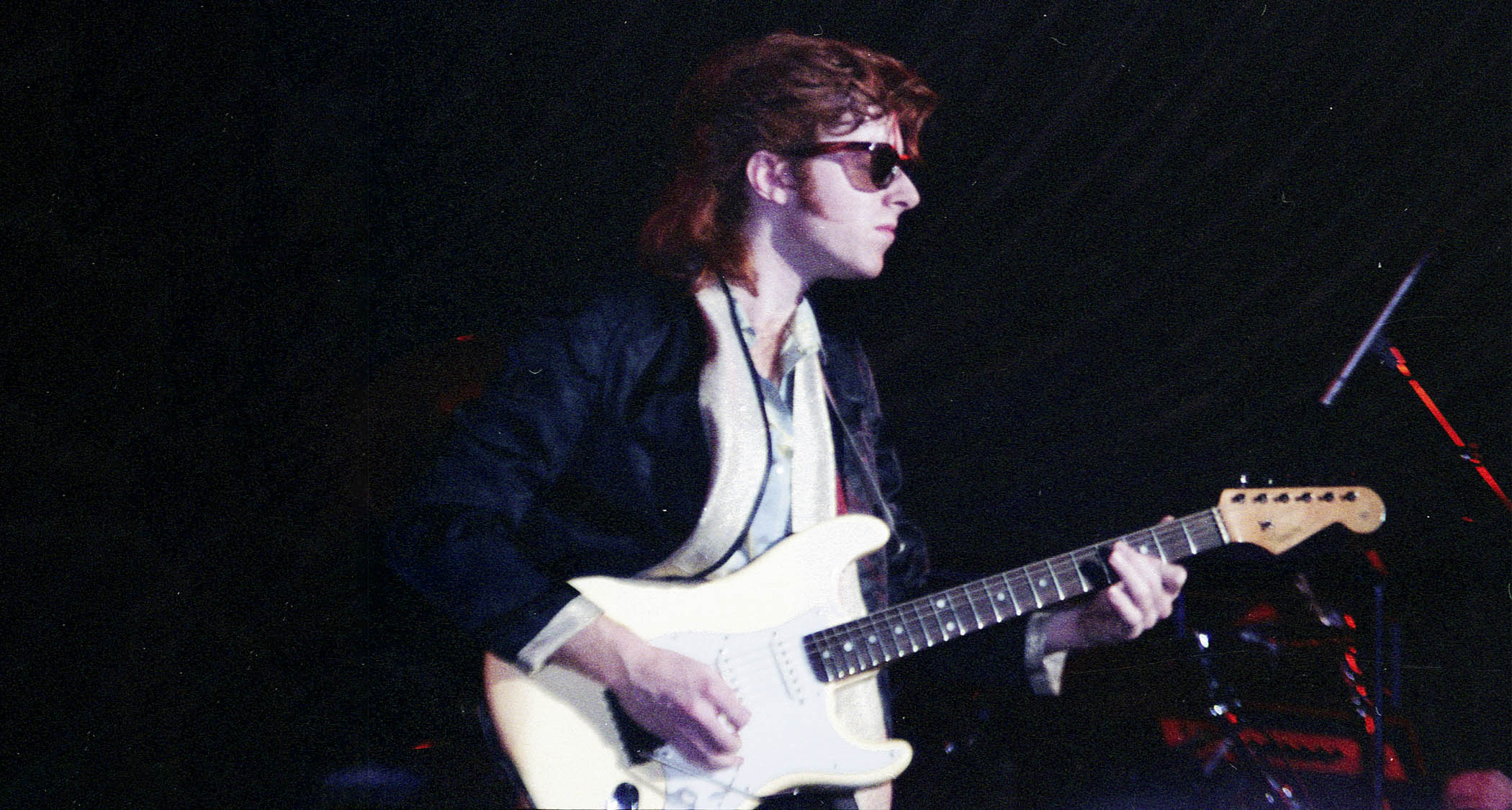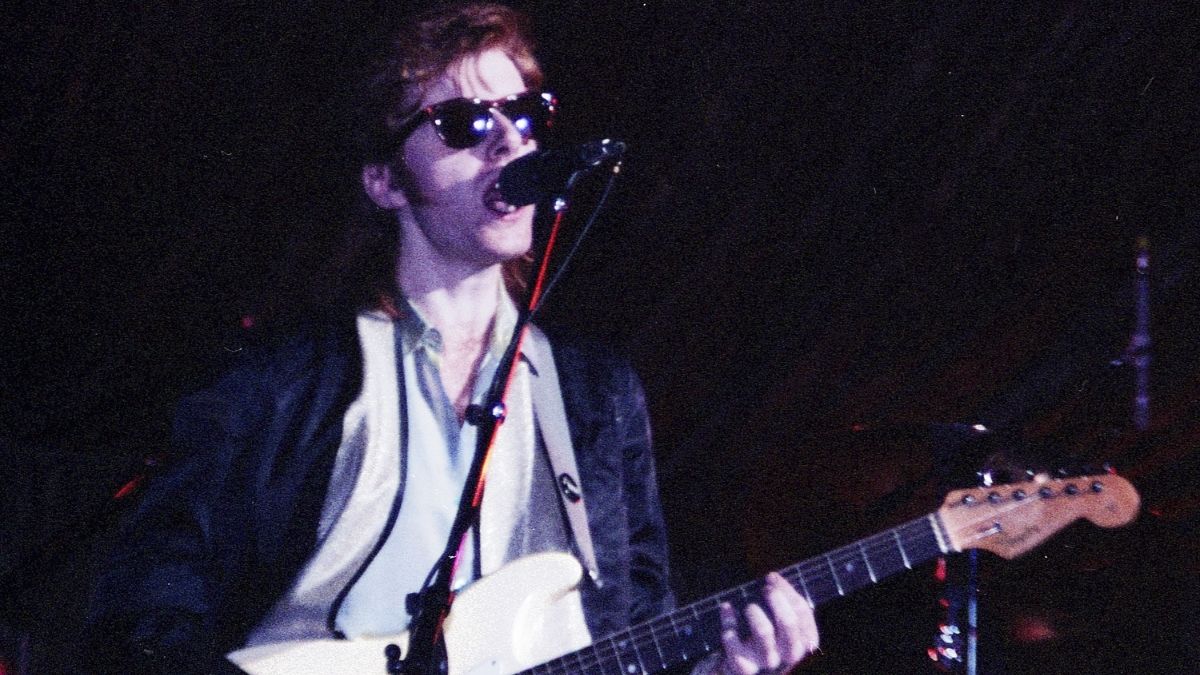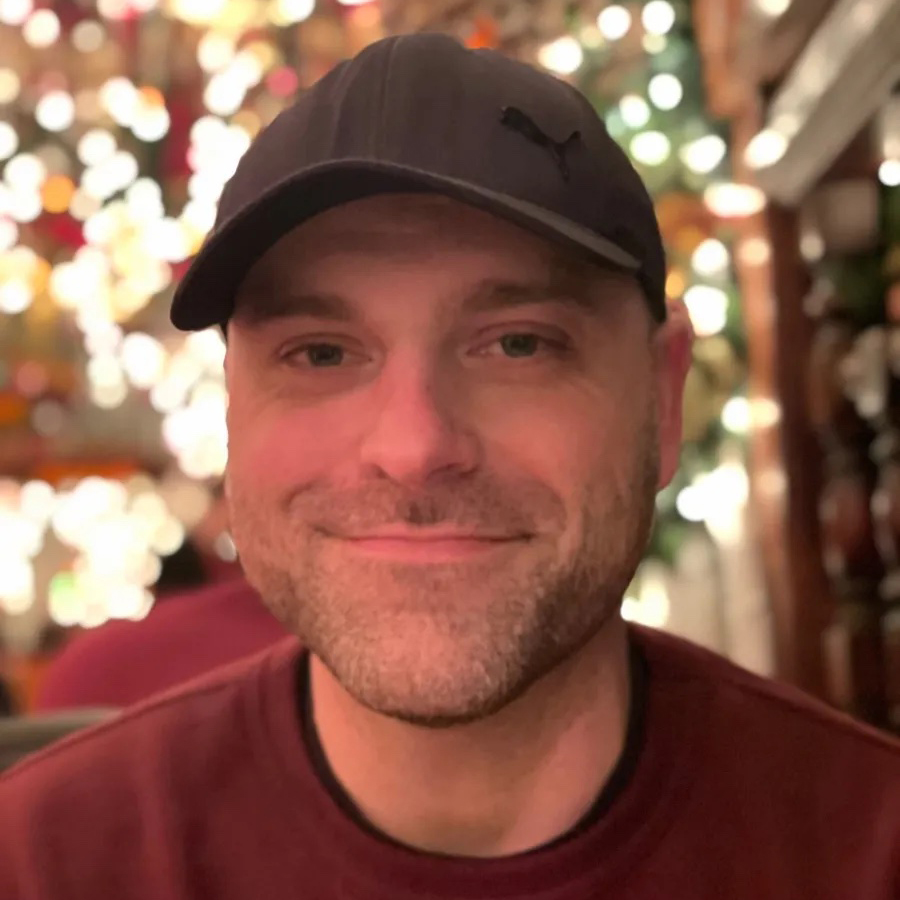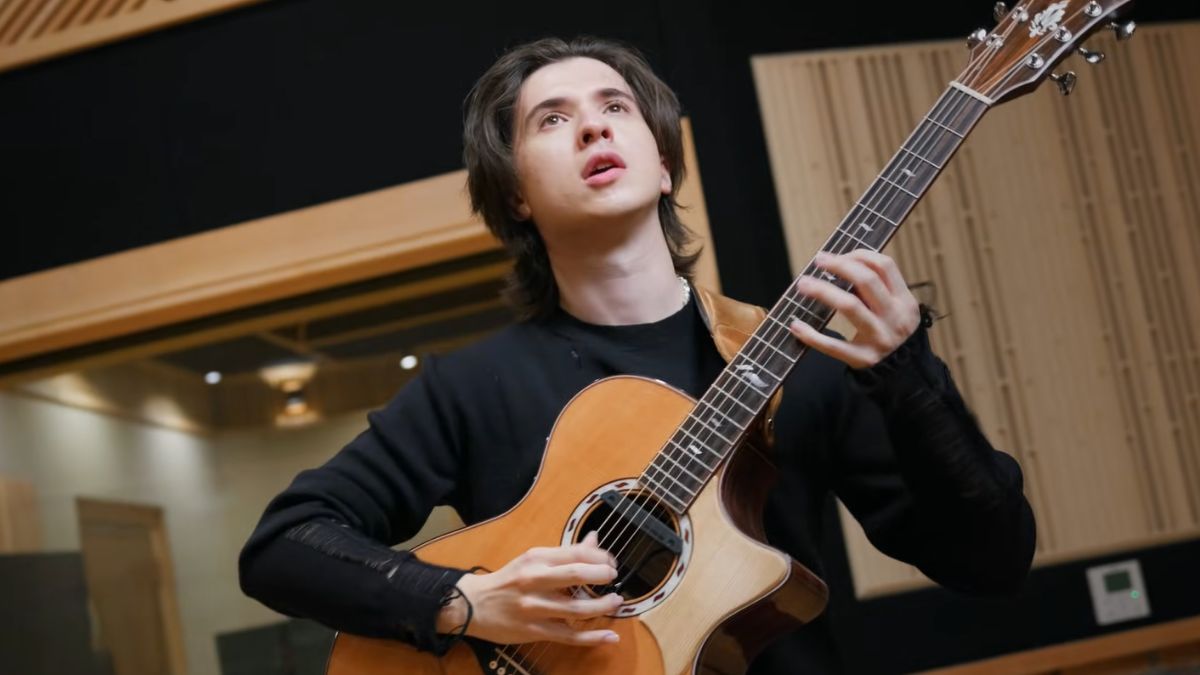“A friend of mine told me about an open audition for a new artist named Cyndi…”: From his education with Cyndi Lauper and giving Alice Cooper a killer Poison intro, to co-writing with Julian Lennon, John McCurry shares the stories behind his biggest hits
A long-time collaborator of Lauper and Lennon, scoring hits with Bonnie Tyler, Belinda Carlisle and Alice Cooper, McCurry’s session career is legendary. To think he started out on accordion…

John McCurry has spent his career as a session ace for artists such as Cyndi Lauper, Billy Joel, Julian Lennon, and Alice Cooper. His passion for guitar is as wide-ranging as his skillset, which kicked off as a youngster. “I was in love with the guitar while I was an accordion player as a child,” McCurry tells Guitar World.
McCurry recalls wanting to switch to guitar, but his father wasn’t for it. “It wasn’t until I was 19 that I finally started to learn guitar,” he says. “I learned very quickly, thankfully.”
The young guitarist’s quick-study nature served him well, as he banged around his home state of Connecticut in cover bands, leading to a career in session work kicked off by a chance meeting with producer Phil Ramone.
After meeting Ramone, McCurry became something of a low-key hitmaker, appearing on notable albums such as Cyndi Lauper’s True Colors, Billy Joel’s The Bridge, Belinda Carlisle’s Heaven on Earth, and Alice Cooper’s Trash, among others.
Elsewhere, friendships with Desmond Child, Kane Roberts, and Julian Lennon accentuate a career that has been hallmarked by McCurry’s six-string Midas touch. “My naivety regarding many of the artists I was blessed to work with helped me to get through those amazing experiences,” McCurry shrugs.
“I am self-taught with no music reading ability and only started playing guitar five years before I landed the Cyndi Lauper gig,” he explains. “Maybe a bit of ‘ignorance is bliss’ going on? Looking back – and forward – I’m realizing what an amazing career I’ve had. I truly am beyond grateful.”
How did you get into session work?
All the latest guitar news, interviews, lessons, reviews, deals and more, direct to your inbox!
“I got into session work through Neil Jason, an amazing bass player, writer, and lifelong friend. He was doing sessions for the producer Phil Ramone, and I was on a touring break for a few weeks, and he had me come by the Hit Factory and play a solo over an artist’s track.
“Apparently, I passed the ‘audition.’ I immediately started working for Phil on several recordings he was working on, and I worked with him for several years after that. It changed my professional life completely.”
What led you to join Cyndi Lauper’s band, and did she give you much feedback as far as guitars go?
Cyndi had a lot of feedback to give me and the band right from the first rehearsal. She had a very clear vision of how she wanted the band to sound and look
“A friend of mine told me about an open audition for a new artist named Cyndi, who had a record coming out and was looking for a touring band. I auditioned and got the gig. Cyndi had a lot of feedback to give me and the band right from the first rehearsal.
“She had a very clear vision of how she wanted the band to sound and look. I had the advantage of being a redhead, so she really focused on my look, and it was a learning experience on every level from day one. Also, she was very particular about sounds and my replicating the album.”
What gear did you use with Cyndi in the early days?
“I was given two Roland Jazz Choruses as my live rig, which I’d never used. I brought my old-school MXR ‘Script’ Compressor pedal, along with a Boss Super Overdrive and Electro-Harmonix Memory Man delay. I didn’t need a chorus pedal as two Jazz Chorus amps are more chorus than anyone needs, though you couldn’t have too much chorus in the ‘80s. [Laughs]”
What was it like recording Cyndi’s True Colors?
“I was the only member of the touring band asked to participate in the True Colors album. I did know many of the session players on it, so I felt more comfortable than I thought I would. It was recorded at the Power Station in NYC, and I did acoustic and electric guitars on it.”
What was the key to lending a hand to her pop-leaning tracks, which usually don’t focus on guitar outwardly?
“Working with Cyndi Lauper was very different for me, to be sure, as I was all about rock, blues, and solos. But I was only playing in the local NYC scene, jumping from club to club, sitting in with any singer who would have me.”

“Cyndi was signed, and I was hired to be part of her touring band to support the record. There’s plenty of great guitar on that album, but not at all the style or sound I was familiar with. So, after getting hired and panicking before our first rehearsal, I really listened to the record.
While learning the parts, I not only learned the set, I learned a whole new style of guitar playing and guitar sounds
“While learning the parts, I not only learned the set, I learned a whole new style of guitar playing and guitar sounds. A remarkable band to be a part of and an incredible artist and singer to watch perform night after night.”
How did you end up playing on Belinda Carlisle’s Circle in the Sand and Heaven on Earth?
“I met the producer and songwriter Rick Knowles in New York City when he was working on songs for a John Waite album he was scheduled to produce. A few years later, Rick was producing Belinda’s record, and he thought of me for it – a really great studio experience with a lot of creative ideas that took place during the sessions. I played electric/acoustic, and I think bass on a song or two.
The guitar parts on Heaven Is a Place on Earth are pretty riffy underneath all the vocal layers. Do you remember laying them down?
“We did that album in LA with Rick Knowles producing and writing a lot of it. Rick and Belinda gave me a lot of room for guitar parts and sounds, so it was a very chill experience. The studio had a ton of great amps, so I had Marshalls, Mesa Boogies, and vintage Fender amps at my disposal.
“There are probably seven or eight guitar layers on Heaven Is a Place on Earth, including clean chorus parts as well as heavy power guitars. There are a few choice riffs parts I did as well, so thanks for noticing them! I used my ‘63 Strat, a couple of Les Pauls, and my trusty ‘80s Strat, complete with a Floyd Rose and humbucker bridge pickup – very '80s gear. [Laughs]”
You played guitar on Bonnie Tyler’s version of Hide Your Heart. How did that come about?
“Desmond Child had an arrangement worked out with Bonnie ahead of time, and the amazing band we had for it sort of fleshed it out as we ran it. I was given quite a bit of freedom when it came to the solo, and it’s still one of my favorites to listen back to today.”
What was it like working with Bonnie in the studio, and what gear did you use?
“Bonnie’s sessions were done at Bearsville Studios, where I worked on several other artists’ albums, which were all produced by Desmond Child. I had my two favorite Marshall 50-watt heads with two Marshall slant bottoms, which were already at the studio for the previous albums I was working on.”
Were you surprised that Hide Your Heart became such a big hit to where Kiss and Ace Frehley both covered it about a year later?
Alice is one of the nicest people I’ve met, never mind working with
“Well, in typical me fashion, I somehow wasn’t aware of the other versions of the song, so it was brand new to me. [Laughs] The room had an awesome sound, especially for guitar overdubs, and I would always play in the control room to better communicate with the artist and producer. I wasn’t surprised Bonnie had a big hit with it because she’s an amazing singer and person. The album felt like it had many hits on it.”
How did you hook up with Alice Cooper, leaning to his biggest ‘80s hit, Poison?
“Once again, working with Desmond gave me the opportunity to work with Alice Cooper, for which I’m eternally grateful. Alice is one of the nicest people I’ve met, never mind working with.
“Poison and my contribution to the song came about when Alice asked me to try to come up with an unusual riff to start the song and sort of weave it through the song.”
How did Alice respond to the Poison riff?
“While in the studio, Alice and Desmond came to me in the live room and told me they were working on another song for the record, and Alice really wanted a signature riff for it. He gave me a few examples of what he was looking for, and I happened to have a riff I used to warm up with from a couple of years before.
“When I played it for him, he just smiled and patted me on the back. Desmond heard it and agreed it was right for the song. I was thrilled, of course, and even more so when it became the intro of the song Poison.”
Alice had already established that sound with Kane Roberts. Was Kane’s style ringing in your ears?
I’m embarrassed to say that at the time of the start of the Trash album, my total awareness of Alice’s catalog was I’m Eighteen and Schools Out, so I wasn’t aware of the more recent stuff
“I’m embarrassed to say that at the time of the start of the Trash album, my total awareness of Alice’s catalog was I’m Eighteen and Schools Out, so I wasn’t aware of the more recent stuff. But after I moved to LA in 1990, I became close friends with Kane and learned all about the modern Alice stuff.”
Can you recall recording the guitar tracks for Poison and what gear you used?
“Yes. I used a guitar made for me by John Suhr, before he created his current company, Suhr Guitar. It was a Strat-style guitar, but with a Gibson scale and a Floyd Rose tremolo; it was my favorite guitar.”
“I had it for three years before it was stolen on my move from NYC to LA. As for amps, I recorded through two Marshall Jubilee 50-Watt [amps], with a power soak and a stereo chorus with a Boss Super Overdrive [SD-1].”
You worked with Kane on his Saints and Sinners album. How did that go down?
“At the time of that recording, Kane and I had already become friends. I was super flattered that he asked me to be a part of it, as he can play circles around me, especially when it comes to shredding. I was able to add some pretty cool rhythm stuff, especially to I’m Just Looking for an Angel. We really grooved well together in the end.”
You seemed to have developed amazing chemistry with Julian Lennon over the years. Tell us about that.
“I met Julian through Phil Ramone when they were recording The Secret Value of Daydreaming album, Julian’s second record. We hit it off right out of the gate, and to this day, he’s one of my nearest, dearest friends. I worked with him from Secret Value to Here Comes Mr. Jordan, produced by Pat Leonard, and Help Yourself, produced by Bob Ezrin.”
What can you say about Julian as far as his sensibility and his expectations for his guitarists?
“Jules is wonderful to work with in every way. He’s open-minded but always knows where he wants the song to go and always gave me lots of room on our co-writes, and space for guitar parts and solos.”
If you have the dream and desire to play guitar or any instrument, you can definitely make it happen
Could you help but have John, Paul, and George’s style and parts in the back of your mind while working with Julian?
“I’ve been a huge Beatles fan since I first saw them on the Ed Sullivan Show, so of course it was always in the back of my mind. I think Julian and I had sort of an unspoken rule that we’d avoid those references, as tempting as it was to go there. But when he sings, it’s just magical to me.”
What’s your best piece of guitar-related advice for someone looking to get into your line of work?
“I think, as much as the business I came up in has changed, the basic premise has not. If you have the dream and desire to play guitar or any instrument, you can definitely make it happen. And it’s a beautiful thing to have in your life, and it’ll be your best friend throughout your life.”
Andrew Daly is an iced-coffee-addicted, oddball Telecaster-playing, alfredo pasta-loving journalist from Long Island, NY, who, in addition to being a contributing writer for Guitar World, scribes for Bass Player, Guitar Player, Guitarist, and MusicRadar. Andrew has interviewed favorites like Ace Frehley, Johnny Marr, Vito Bratta, Bruce Kulick, Joe Perry, Brad Whitford, Tom Morello, Rich Robinson, and Paul Stanley, while his all-time favorite (rhythm player), Keith Richards, continues to elude him.
You must confirm your public display name before commenting
Please logout and then login again, you will then be prompted to enter your display name.









